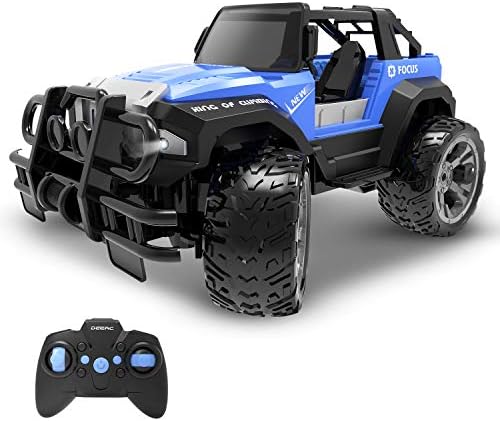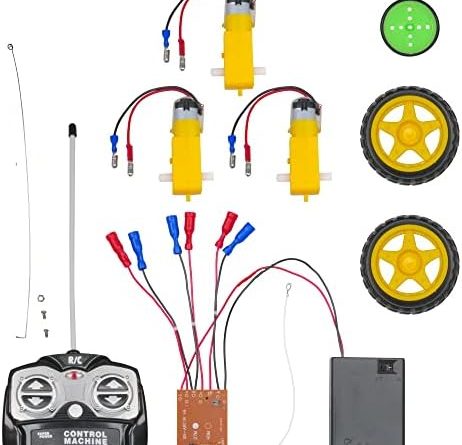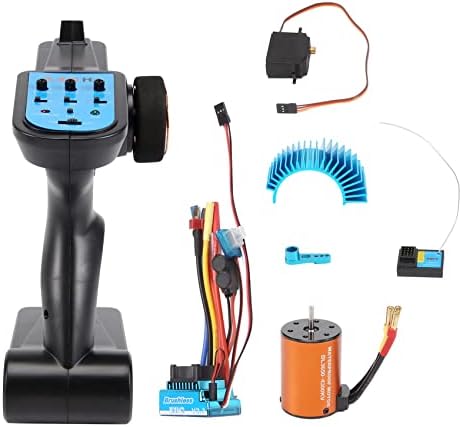








RC Car Obstacles: How to Overcome Them Like a Pro
As technology advances, the world of remote-controlled (RC) cars has become increasingly diverse and competitive. From professional racing to backyard fun, these miniature vehicles can be enjoyed by hobbyists of all ages. However, no matter how versatile and skillfully designed RC cars are, they still face obstacles that can hinder their performance. To help you overcome these obstacles like a pro, we’ve put together this comprehensive guide on RC car obstacles.
WHAT ARE RC CAR OBSTACLES?
RC car obstacles are physical or environmental barriers that stand in the way of your vehicle’s smooth movement. They can be natural elements such as rocks, bumps, and dirt or man-made obstacles like jumps, ramps, and barriers. These obstacles can be found in various types of terrains, including paved surfaces, dirt tracks, and indoor spaces.
TYPES OF RC CAR OBSTACLES
1. Jumps and Ramps
Jumps and ramps are man-made obstacles that add excitement and challenge to RC car racing. They are usually made of wood, plastic, or other materials and can be arranged in different shapes and sizes. These obstacles require the driver to master the car’s speed, direction, and timing to land safely and accurately.
2. Water and Mud
Water and mud are natural obstacles that often occur when racing on outdoor tracks. They can create an unpredictable and slippery surface that can affect traction, speed, and handling. Water, in particular, can damage the electronic components of your RC car, so be sure to keep your vehicle dry and protected.
3. Potholes and Bumps
Potholes and bumps can be found in outdoor and indoor tracks and can cause your RC car to lose balance and control. They can also disrupt the car’s alignment and damage its suspension. To minimize the impact of these obstacles, you should adjust your car’s tires, shocks, and suspension to suit the terrain.
4. Rough Terrain
Rough terrain, such as rocky or uneven surfaces, can be challenging for RC cars, especially low profile models. These terrains can affect your car’s stability, speed, and grip. To tackle these obstacles, you need to choose an RC car with suitable ground clearance and durable tires.
HOW TO OVERCOME RC CAR OBSTACLES
1. Choose the Right RC Car
The first step in overcoming RC car obstacles is choosing the right type of vehicle. There are different types of RC cars available, including buggies, truggies, monster trucks, and crawlers. Each type is designed for specific terrains and driving styles, so make sure to choose one that suits your preferences and racing environment.
2. Adjust Your Suspension
RC car suspension plays a crucial role in absorbing shocks and maintaining stability on uneven surfaces. By adjusting your car’s shocks, stiffness, and ride height, you can customize its performance to suit the terrain and obstacles you’re facing.
3. Modify Your Tires
Tires are the only contact point between your RC car and the ground, so they play a vital role in traction, handling, and speed. You can modify the tires’ tread pattern, compound, and size to improve their performance on different terrains.
4. Practice Your Driving Skills
Overcoming RC car obstacles requires skill, patience, and practice. You need to develop your ability to control your car’s speed, direction, and timing, especially when facing jumps and ramps. Practice on different terrains, and try to improve your lap times and performance.
5. Protect Your RC Car
RC cars can be expensive, so protecting them from damage is essential. Use a protective cover or shell to shield your car’s electronic components from water, dust, and dirt. Always keep your car’s battery charged and avoid using it in extreme weather conditions.
FAQs
1. What is the best type of RC car for obstacles?
The best type of RC car for obstacles depends on the type of terrain you’re driving on. If you’re racing on a smooth surface, a high-speed buggy or truggy might be suitable. If you’re facing rocky or uneven terrain, a crawler or monster truck may be a better option.
2. How can I improve my RC car’s suspension?
To improve your RC car’s suspension, you can adjust its shocks’ stiffness and ride height. You can also upgrade to better quality shock absorbers and springs.
3. Can water damage my RC car?
Yes, water can damage your RC car’s electronic components, especially if they are not waterproof. Always keep your car dry and protected when driving in wet conditions.
4. What is the best way to protect my RC car from damage?
To protect your RC car from damage, use a protective cover or shell, avoid extreme weather conditions, keep your battery charged, and clean your car after each use.
5. How can I improve my driving skills for RC car obstacles?
The best way to improve your driving skills for RC car obstacles is to practice on different terrains and obstacles. Try to focus on control, timing, and precision, and learn from your mistakes to refine your technique.
FINAL THOUGHTS
RC car racing is a thrilling and challenging hobby that requires skill, patience, and adaptability. Overcoming RC car obstacles like a pro requires you to choose the right car, adjust its suspension, and modify its tires. You should also practice your driving skills and protect your car from damage. By following these tips, you can master any obstacle and enjoy the full potential of your RC car.
Price: $255.99
(as of Apr 06, 2023 11:37:55 UTC – Details)







